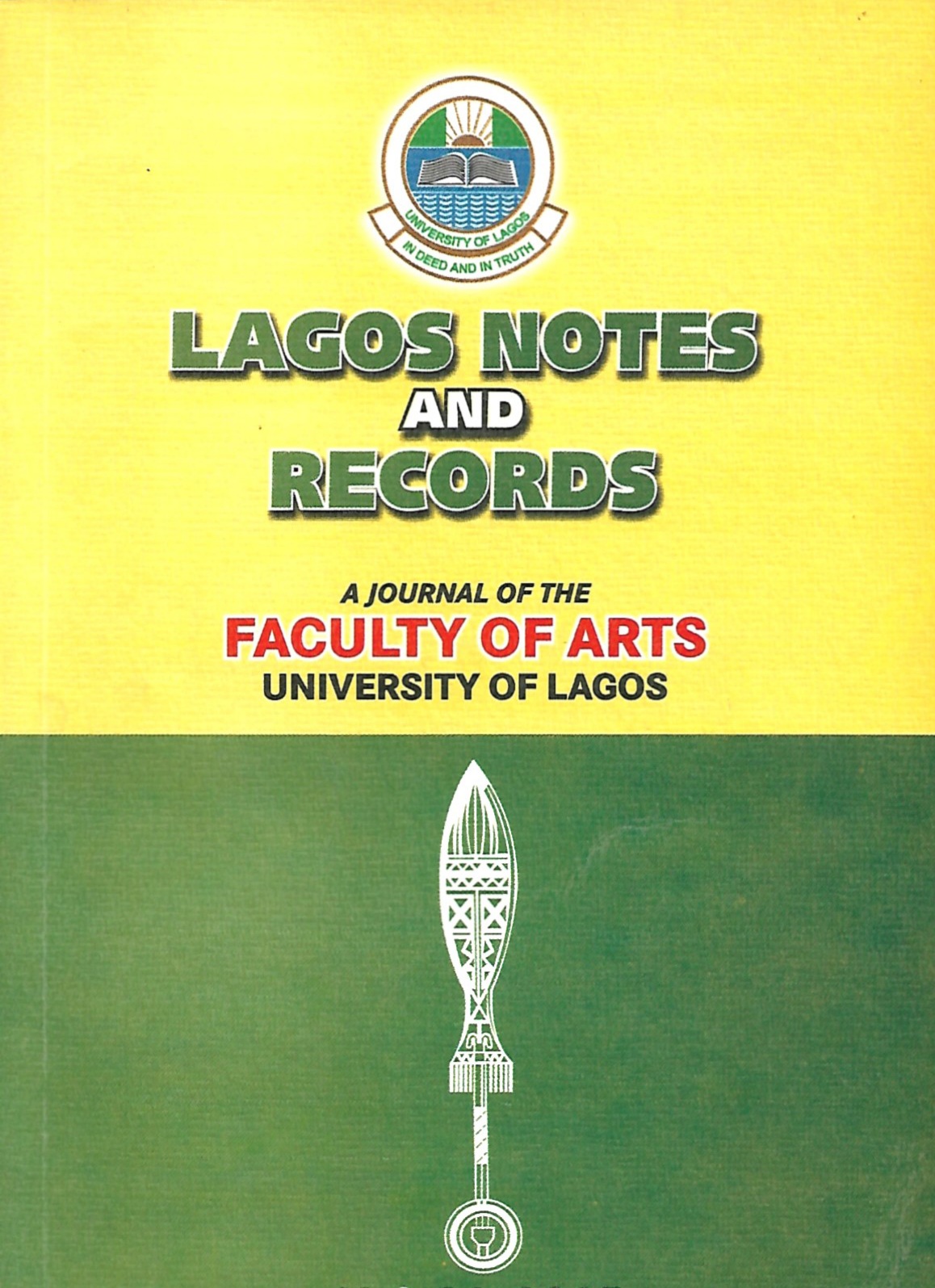
I am delighted to announce the publication of Volume 30 (2024) of our esteemed journal, Lagos Notes and Records. The volume is a collection of eight (8) thought-provoking, insightful, and well-researched scholarly articles representing contemporary thoughts in various disciplines of the humanities with particular focus on History and Culture, Literature, Creative Arts, Language and Linguistics, and Religion. Each of the selected articles provides a unique perspective on pressing socio-cultural, historical, and economic issues, offering a wealth of knowledge to all and sundry.
The volume opens with the Distinguished Professor Ayọdeji Olukoju’s article on Japan’s socio-political and economic transformation, providing a robust analysis of the key elements—kokutai, hataraku, and atarashi—that shaped her development. It explores the intersection of nationalism, work ethic, and innovation, offering crucial lessons for nations in the Global South, particularly Nigeria. The study highlights the significance of cultural identity and strategic national planning in promoting sustainable growth by contrasting Japan's strategic developmental policies with those of developing nations. The paper challenges policymakers to rethink economic and industrial strategies that align with national identity and workforce motivation.
The complexities of migration and the Mediterranean as both a utopian and dystopian space are critically examined by Richard Ajah and Kayode Atilade in their study of Tahar Ben Jelloun’s Partir. By examining the Mediterranean's dual position as a site of danger and possibility, the writers shed light on the hopes and fears of Moroccan migrants through the prism of postcolonial utopianism. The study further explores the socio-political implications of migration, addressing how border politics and economic disparities shape the collective hopes and struggles of displaced individuals. The authors make a compelling case for re-evaluating global migration policies to mitigate the dangers associated with transcontinental crossings.
John Daniel and Olawale Yemisi’s historical investigation into the Ebira migrant community in Ibadan offers a fresh perspective on host-migrant relations in Nigeria. The study, grounded in historical methodology and oral interviews, reveals a narrative of peaceful co-existence, socio-economic integration, and the significant contributions of migrant communities to urban development. The article expands on the broader themes of migration, cultural assimilation, and economic adaptation. It provides a comprehensive examination of how migrant communities enrich their host societies. The authors argue for the need to foster inclusive policies that enhance intergroup relations and contribute to regional development.
The intersection of African feminist ethics, oral literature, and cultural preservation is carefully explored by Abayomi Awelewa and Rosemary Osariemen Awelewa. Their study of Veronique Tadjo and Yvonne Vera’s works unveils the multifaceted ways in which oral traditions function as mediums for feminist discourse and cultural transmission, reinforcing the relevance of indigenous storytelling. The paper highlights how these authors subvert traditional narratives to amplify women’s voices and challenge existing power structures thereby adding to African feminist literary criticism. The analysis emphasizes the crucial role of oral aesthetics in shaping contemporary feminist thought in African literature.
Aso-Oke weaving, a historically male-dominated art form, is undergoing a transformative shift as examined by Otonye Bille Ayodele and Samuel Kehinde Kolawole. The study documents the emergence of women cloth-weavers in Oke-Ogun and how their artistic ventures contribute to the sustainability and global expansion of the traditional craft, which further challenges the gendered norms in textile production. The authors provide an in-depth examination of the economic and cultural significance of Aso-Oke, demonstrating how female artisans are redefining industry standards and ensuring the longevity of a historically significant craft.
The digital age has intensified debates surrounding abortion, with social media serving as a battleground for pro-life and pro-choice campaigns. Kofoworola Ajibola Adedeji and Elizabeth Oluwatobi Ayorinde employ multimodal discourse analysis to dissect the interplay between linguistic and visual strategies in these debates. Their findings emphasise the power of digital rhetoric in shaping ideological perspectives and influencing public opinion. Furthermore, the study draws attention to the role of algorithmic amplification in digital activism and raises pertinent questions about the ethical considerations of persuasive messaging in online discourse.
Religious institutions have historically shaped societal structures, and Opeyemi Wemimo Adedoyin’s study on women’s agency in the Methodist Church Nigeria examines the evolving roles of women in church leadership. Employing phenomenological approaches, the study highlights the impact of the Women’s Work Department in promoting collective empowerment and sustainable contributions to church governance. It also examines the historical challenges faced by women in religious institutions, and concludes by offering a compelling argument for gender inclusivity in faith-based organizations’ leadership.
To cap it up, Bosede Funke Afolayan and Nurayn Fola Alimi explore the long-standing debate on language in African literature through an analysis of Wole Soyinka’s Death and the King’s Horseman. The study positions Soyinka’s use of ritual language as a significant contribution to the discourse on linguistic expression in African drama, demonstrating its accessibility to both local and global audiences. It draws attention to the broader implications of linguistic choices in postcolonial literature, arguing that language is not just a tool for storytelling but a medium for cultural identity preservation.
The articles featured in this volume not only provide new insights into their respective fields, they engage with broader social, cultural, and historical concerns. I, therefore, commend the authors for their scholarly contributions and thank the Editors for a job well done. I am confident that the diverse perspectives presented in the volume will stimulate further research and inquiries, and broaden academic conversations across disciplines in the humanities and beyond.
Professor Akanbi Mudasiru Ilupeju
Dean, Faculty of Arts
Editor-in-Chief
